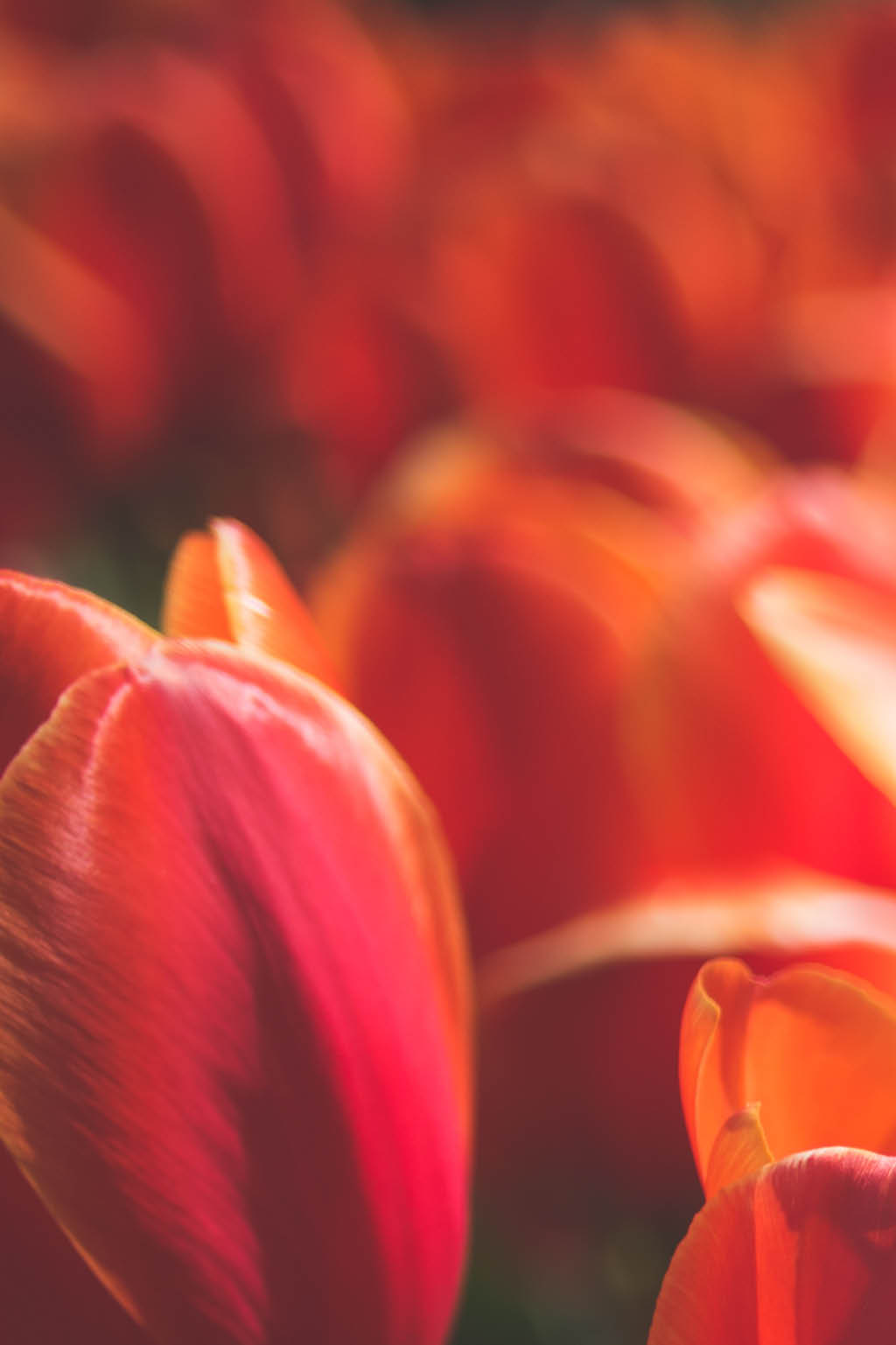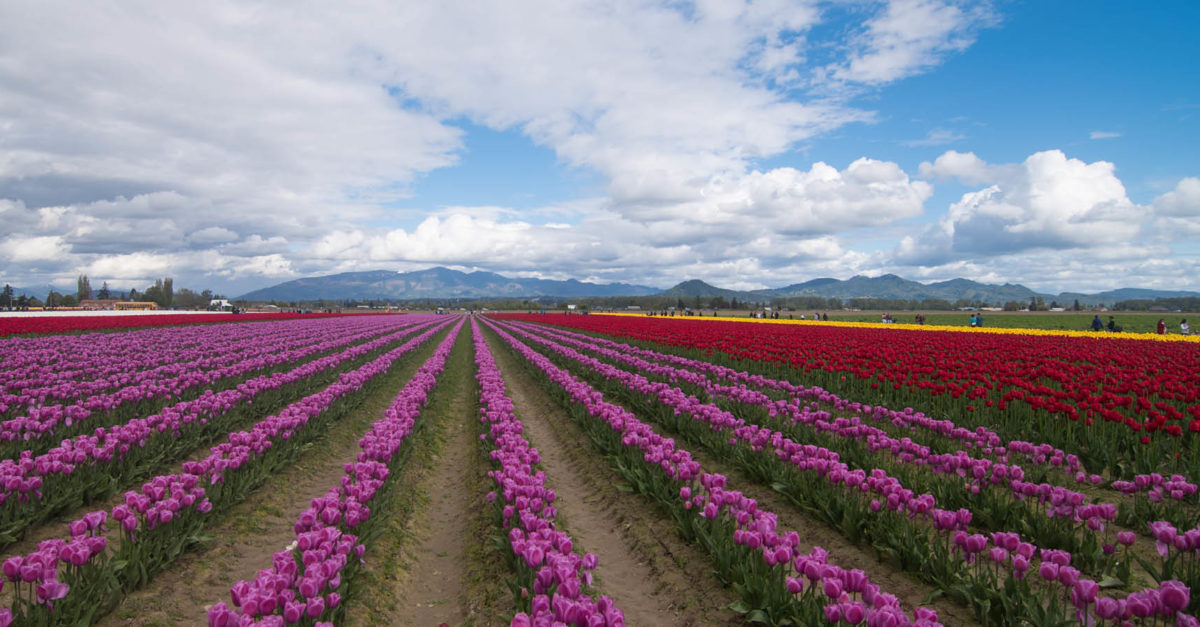Tiptoe Around the Tulips
Did you know the climate of the Skagit Valley in Washington State is very similar to the climate of the Netherlands, aka the unofficial tulip capital of the world? If you look at a globe and trace your finger west from the Netherlands, you will notice the two locations have similar latitudes, only off by about four degrees. Mild, wet winters and moderate summers make the Skagit Valley (and the Netherlands) prime tulip-growing territory. Every April since 1984, hundreds of thousands of flower lovers make the trek to Mount Vernon, Washington, to witness the dazzling tulip bloom at the monthlong Skagit Valley Tulip Festival.
The first official tulip festival happened quite organically. As executive director Cindy Verge explains, “The Mount Vernon Chamber of Commerce got together and said, ‘Wow, we have people coming to see our tulips. We should build a festival around the tulip bloom.’ The festival features two of the original four growers: Skagit Valley Bulb Farm and the Washington Bulb Company.” Verge answered an ad for the sponsorship coordinator position and later became executive director of the festival. Her background in communications means she is able to coordinate the multitude of activities and events that are hosted in various locations across the Skagit Valley. Despite the actual festival only happening for a month, it’s a full-time, year-round job. When asked what makes it worthwhile, Verge gushes: “I get to share something that is beautiful with people from all over the world. The work I do allows that to happen. I think that’s just fabulous! It’s really fun to meet people from Africa and Australia and Europe and the East Coast. It’s a tourism industry, so I’m always in contact with people who have come here to have a good time. It’s a joy having people who are so excited to see the flowers.”
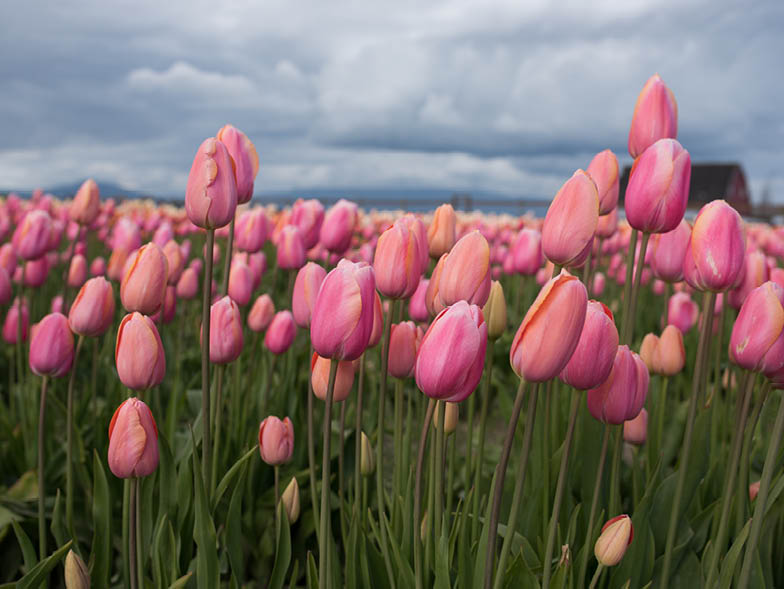
And the flowers are aplenty! Rows and rows of tulips stretch out in a sea of vivid color, with the mountains of the Pacific Northwest as a dramatic backdrop. The Washington Bulb Company alone plants 350 acres of tulips spread across seven fields in the Skagit Valley. When William Roozen, a Dutch tulip grower whose family had been in the business since the 1700s, decided he wanted to give America a shot, he hopped on a boat shortly after marrying his wife and landed in the Skagit Valley. They saved up some money, bought five acres of land, and purchased the Washington Bulb Company. At that time, there were several Dutch growers, some of whom knew each other from Holland. There are now two tulip growers in the Skagit Valley—Roozen’s company and the Skagit Valley Bulb Farm, which is run by Jeannette and Tom DeGoede.
ROOZENGAARDE
The Washington Bulb Company is the creator behind RoozenGaarde, one of two official festival gardens that visitors can drive to and park in a designated area. RoozenGaarde features forty to fifty acres of tulips, carefully planted in rows for both practical and aesthetic purposes.
Brent Roozen, grandson of founder William, explains, “The fields are created by towing a planter behind a tractor. We start with one variety of tulip, mark it, and use the bulbs until they are gone. Then we mark again with a new variety. The coordinates are also written down and kept in books in case the markers get moved.” Tulips are planted on flat ground, but the dirt is mounded up on top of them to create ditches, which help the rainwater to drain.
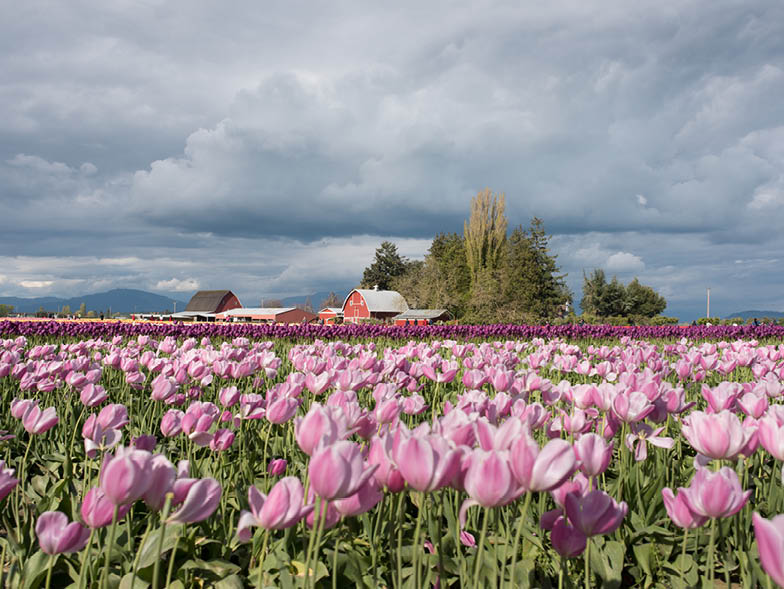
RoozenGaarde actually spans 200 acres, but only forty to fifty acres of land are planted with tulips. Because tulips are an actual crop, they should only be planted in the same spot every six years to follow best growing practices. RoozenGaarde is divided into six plots, and the tulip bloom migrates from plot to plot each year. Visitors are asked to stay on designated paths and not walk in between the rows to avoid damaging the tulip bulbs. RoozenGaarde also features a smaller display garden, with a theme and precisely designed vignettes that are sketched out with sawdust in the soil before being planted. Because these are planted in the same place each year, gardeners must be meticulously vigilant to spot signs of botrytis, a type of fungus that can affect tulips and spreads via spores. Diseased tulips are pulled out each morning to ensure the flowerbeds stay clean. Says Roozen, “We pull 5,000 tulips each year. It sounds like a lot, but when you’re growing 500,000, it’s not that many.”
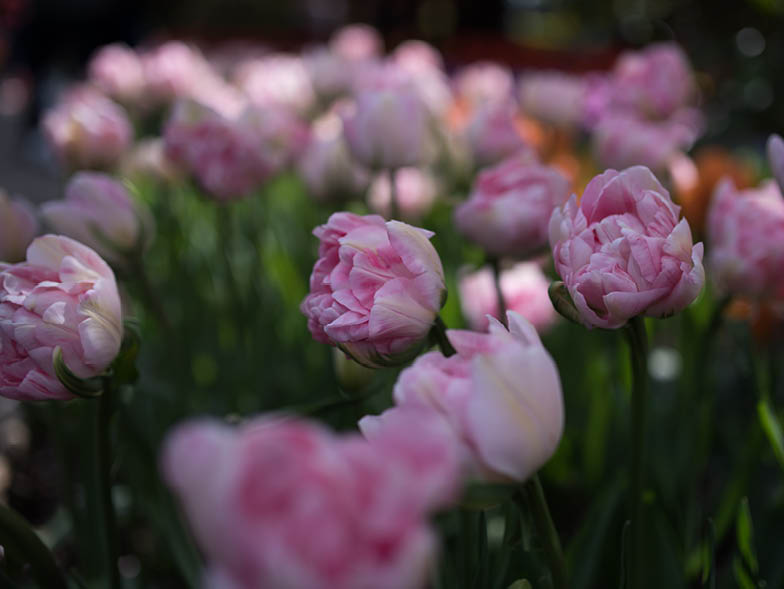
Because tulips are a business for the Roozen clan, tulip varieties that are planted in the fields often coordinate with the varieties in the greenhouse to keep costs down. The fields are mainly used for bulb production, and the greenhouses are used 100 percent for fresh-cut flowers. The leftover bulbs from the greenhouse get planted in the fields to grow for two to three years until they become large enough to become greenhouse bulbs. And the process continues. Currently, 85 percent of income comes from fresh-cut flowers, as opposed to 15 percent in bulb sales. It was the opposite back when William began his business over sixty years ago, but now, with greenhouses and technology, tulips can be grown indoors 365 days a year, as opposed to bulb production, which only has one season. Fresh-cut flowers are sold to major grocery retailers in the surrounding areas, as well as e-commerce sites like tulips.com, which ships fresh tulips overnight.
Field-grown tulips are also sold in smaller quantities. The blooms tend to be much larger and richer in color than the greenhouse blooms. Roozen explains, “In a greenhouse, winter is simulated via a cooler, and tulips flower in three to four weeks. When they are planted in the field in September and October, they go through the winter naturally and begin poking through in early January. From January to April, they have a very slow growing season, which helps them have a bigger bloom and deeper color.” Field-grown tulips need to be picked shorter so greenery is left on the stem for the bulbs to grow.
TULIP TOWN
The other official garden of the Skagit Valley Tulip Festival is dubbed Tulip Town, and it features a windmill that owner Tom DeGoede had built to look like a replica of the windmill in his family’s village in Holland. They also create a little town in their barn every year, with a couple of impressive murals. Artwork is displayed by local artists and is available for purchase, along with snacks and hot beverages, which you may want to partake in—April can be chilly and windy in the Pacific Northwest. Behind Tulip Town is another ten to fifteen acres of tulips planted in rainbow stripes of color.
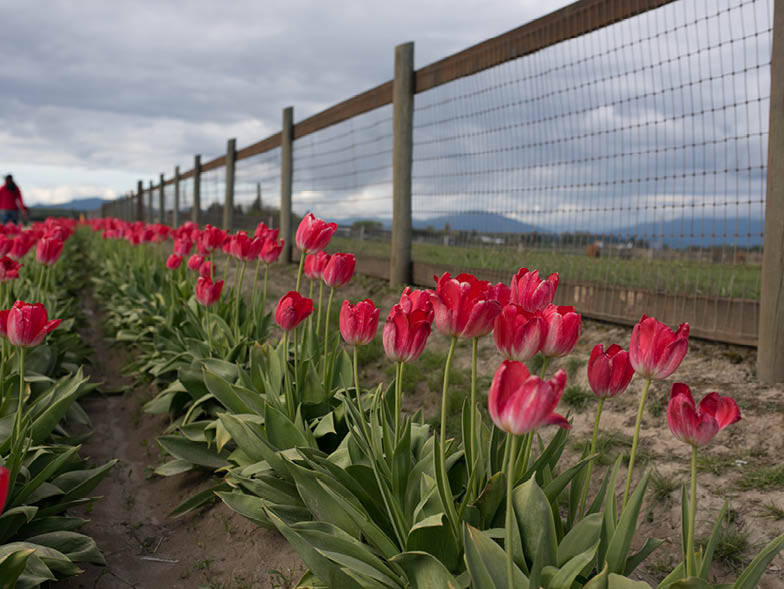
Both Tulip Town and RoozenGaarde have become a playground for photographers—professionals and amateurs alike. It can be difficult to rein in selfie-seeking visitors, who sneak between the tulip rows in pursuit of the best photo. Verge says the explosion of social media has been mostly a boon to their campaign, with excited visitors posting photographs of the tulip blooms all over Facebook and Instagram.
Social media is also ideal for keeping visitors posted on the status of the tulip bloom, which can come early or late depending on the temperatures in winter. The festival is typically held for the month of April, but there have been years the bloom began in mid-March or carried over into the first weeks of May.
With a reasonable entrance fee and gorgeous fields in which to roam around, the Skagit Valley Tulip Festival is, without a doubt, worth a visit. Grab a friend to photograph and make a day out of it, and stick around for a meal in Mount Vernon or the neighboring town of La Conner. And remember to tiptoe around the tulips, not through them.
For more info, visit tulipfestival.org
